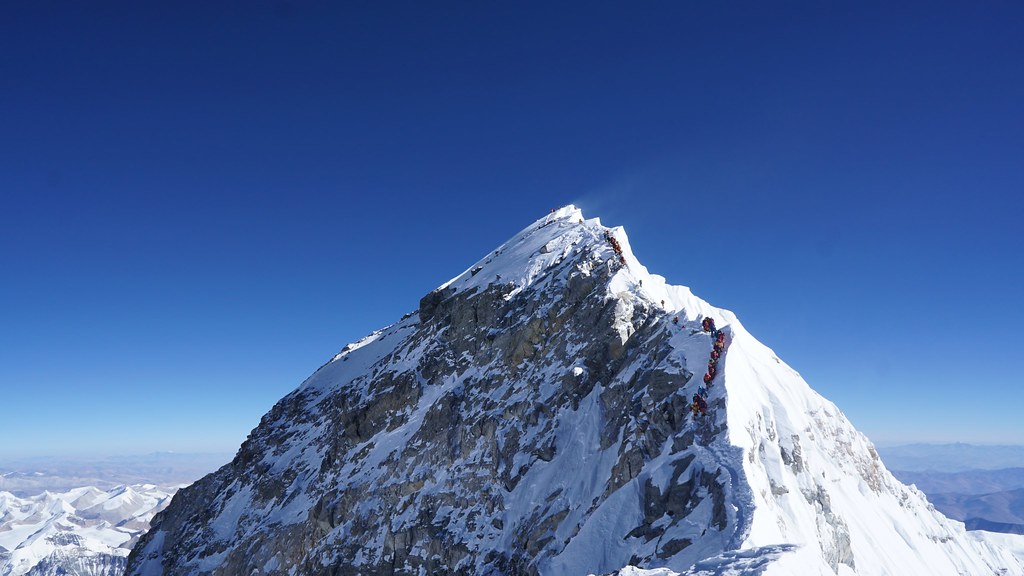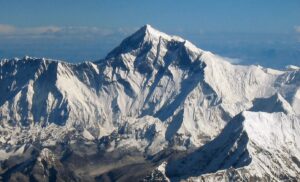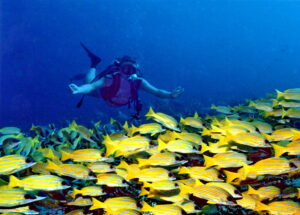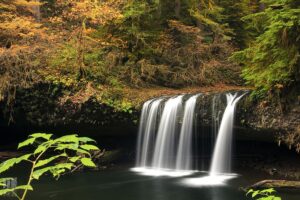Climbing Mount Everest: A Beginner’s Guide to the Challenge of a Lifetime

The Majestic Everest: A Dream Worth Pursuing
Mount Everest, the tallest peak on Earth, stands as an awe-inspiring beacon, beckoning adventurers and dreamers alike to test their limits against its towering heights. From its majestic summit, the world unfurls in all its splendor, offering a view reserved for the most intrepid souls.
Embarking on a journey to conquer Everest is not merely an endeavor; it’s a quest that demands meticulous preparation, unwavering determination, and profound respect for nature’s grandeur. In this guide, we’ll unravel the complexities of Everest’s allure and help beginners navigate the path to determine their readiness for this monumental challenge.
The Immensity of the Challenge
What is Mount Everest?
Mount Everest reigns as the world’s highest mountain, standing tall at an astonishing height of 29,032 feet (8,848 meters) above sea level. Located in the majestic Himalayas, straddling the border between Nepal and Tibet, Everest captivates the imagination of adventurers worldwide.
Difficulty Level
Climbing Everest presents a formidable challenge, testing the limits of human endurance and skill. The extreme weather conditions, with temperatures plummeting well below freezing and hurricane-force winds, pose a relentless obstacle. Moreover, the thin air at high altitudes makes breathing difficult, leading to altitude sickness, a potentially life-threatening condition.
Technical climbing skills are indispensable for navigating Everest’s treacherous terrain. Climbers encounter steep icy slopes, sheer rock faces, and crevasses, requiring proficiency in ice climbing, rock climbing, and glacier travel.
Statistics
Success Rates
- Only a fraction of those who attempt Everest reach the summit successfully.
- Success rates vary from year to year, influenced by weather conditions, climbing conditions, and individual preparedness.
- On average, the success rate hovers around 60% for climbers attempting the standard routes from Nepal and Tibet.
Fatalities
- Everest’s unforgiving nature has claimed the lives of many climbers throughout its history.
- Statistics from various sources indicate an average fatality rate of approximately 2-3% for climbers attempting to summit Everest.
- Causes of fatalities include falls, avalanches, altitude sickness, and exposure to extreme weather conditions.
Are You Cut Out for Everest?
Physical Fitness
- Peak Climbing Experience: Climbing Mount Everest demands more than just a desire to conquer heights; it requires a solid foundation of climbing experience. Before attempting Everest, climbers typically tackle smaller peaks, gaining essential skills and acclimatizing to high altitudes.
- Strenuous Training Required: Training for Everest involves a rigorous regimen focused on building strength, endurance, and cardiovascular fitness. Activities such as hiking, running, weightlifting, and high-altitude trekking are essential components of preparation.
Mental Toughness
- Dealing with Isolation: Climbing Everest often means enduring long periods of isolation, separated from the comforts of civilization. Mental fortitude is crucial for coping with the solitude and maintaining focus amidst the vast, desolate landscape.
- Facing Fear: Fear is an ever-present companion on Everest, whether it’s fear of failure, fear of heights, or fear of the unknown. Overcoming these fears requires resilience, self-awareness, and a deep understanding of personal limits.
- Confronting Extreme Conditions: From bone-chilling cold to blinding blizzards, Everest subjects climbers to some of the most extreme weather conditions on Earth. Adaptability, patience, and a positive mindset are essential for navigating through challenges.
Financial Considerations
- Expedition Costs: Mount Everest expeditions entail substantial financial investment. Costs can vary widely depending on factors such as the route chosen, the duration of the expedition, and the level of support provided by guiding companies. On average, climbers can expect to spend anywhere from $30,000 to $100,000 or more.
- Gear: High-quality gear is non-negotiable for Everest climbers. From specialized clothing designed to withstand extreme temperatures to state-of-the-art equipment for ice and rock climbing, the cost of gear alone can amount to thousands of dollars.
- Permits and Fees: Climbing Everest requires obtaining permits from the respective authorities in Nepal or Tibet, adding to the overall expense. Additionally, climbers must factor in expenses for travel, accommodation, food, and miscellaneous fees.
Preparing for Everest
Training Plan
- Strength Training: Incorporate exercises to build core strength, leg muscles, and upper body strength. Examples include squats, lunges, deadlifts, pull-ups, and push-ups.
- Endurance Training: Focus on cardiovascular exercises to improve endurance and stamina. Activities such as running, cycling, and hiking with a weighted backpack are beneficial.
- Altitude Acclimatization: Gradually increase exposure to higher altitudes to allow the body to adjust to reduced oxygen levels. This can include trekking at high elevations and spending time in hypoxic chambers if available.
Choosing an Expedition Company
- Experience: Look for companies with a proven track record of successfully guiding climbers to the summit of Everest. Consider the number of expeditions led, the qualifications of guides, and testimonials from previous clients.
- Safety Record: Prioritize safety above all else. Research the company’s safety protocols, evacuation procedures, and emergency response capabilities.
- Reputation: Seek recommendations from experienced climbers or reputable sources within the mountaineering community. A company’s reputation for professionalism, integrity, and ethical practices is paramount.
- Cost Comparison: Compare the costs of different expedition companies, keeping in mind factors such as the level of support provided, the quality of services, and additional perks included in the package.
Essential Gear
- Clothing for Extreme Cold: Invest in high-quality, insulated clothing designed specifically for extreme cold weather conditions. This includes down jackets, insulated pants, thermal base layers, and waterproof outer shells.
- Climbing Equipment: Acquire essential climbing gear such as harnesses, helmets, ropes, crampons, and ice axes. Ensure that equipment is well-maintained and in good working condition.
- Oxygen Tanks: Oxygen supplementation is crucial for climbing at high altitudes where oxygen levels are significantly lower. Purchase or rent oxygen tanks and familiarize yourself with their use before the expedition.
The Climb Itself
Route Overview
- Base Camp: The journey begins at Everest Base Camp, situated at approximately 17,600 feet (5,364 meters) above sea level. It serves as the staging area for climbers, offering a temporary home amidst the breathtaking Himalayan landscape.
- Khumbu Icefall: Known as one of the most treacherous sections of the climb, the Khumbu Icefall presents a labyrinth of towering ice seracs and deep crevasses. Climbers navigate this hazardous terrain while contending with shifting ice blocks and the constant threat of avalanches.
- Hillary Step: Named in honor of Sir Edmund Hillary, the first person to reach the summit of Everest, the Hillary Step is a steep rock face near the summit. Climbers must negotiate this technical section with precision and focus, often using fixed ropes for safety.
Acclimatization Hikes
- Importance: Acclimatization hikes are essential for allowing the body to adjust to the reduced oxygen levels at high altitudes gradually. By ascending gradually and spending time at various elevations, climbers can minimize the risk of altitude sickness and improve their chances of summit success.
- Potential Dangers: Altitude sickness, also known as acute mountain sickness (AMS), can occur when ascending too quickly without proper acclimatization. Symptoms include headache, nausea, dizziness, and fatigue. Acute cases can lead to more severe conditions such as high altitude pulmonary edema (HAPE) or high altitude cerebral edema (HACE), both of which require immediate medical attention.
Expedition Timeline
- Typical Duration: The entire climb typically takes around two months to complete, including time for acclimatization, rest days, and summit attempts.
- Stages: The expedition follows a carefully planned timeline, with climbers gradually ascending and descending the mountain to acclimatize to the increasing altitude. This involves multiple rotations between Base Camp, higher camps, and acclimatization hikes to progressively higher elevations. Summit attempts are usually made during a narrow window of favorable weather conditions, typically in May.
The Risks and Rewards
Avalanches, Crevasses, Icefall Dangers, and Unpredictable Weather
- Avalanches: The steep slopes of Everest are prone to avalanches, particularly in areas like the Khumbu Icefall and above the Western Cwm. These sudden and powerful masses of snow can pose a significant threat to climbers and Sherpas alike.
- Crevasses: Deep crevasses lurk beneath the surface of glaciers, presenting hidden hazards for climbers. Crossing these icy chasms requires careful navigation and the use of fixed ropes and ladders.
- Icefall Dangers: The Khumbu Icefall, a constantly shifting maze of seracs and crevasses, is one of the most dangerous sections of the climb. Climbers must navigate through this treacherous terrain while avoiding collapsing ice towers and the risk of falling into hidden crevasses.
- Unpredictable Weather: Everest’s extreme altitude and location in the Himalayas make it susceptible to rapidly changing weather conditions. Sudden storms, high winds, and plummeting temperatures can turn a routine climb into a life-threatening ordeal.
Health Risks
- Altitude Sickness: As climbers ascend to higher altitudes, the decreased oxygen levels can lead to altitude sickness. Symptoms include headaches, nausea, dizziness, and fatigue. In severe cases, altitude sickness can progress to life-threatening conditions such as high altitude pulmonary edema (HAPE) or high altitude cerebral edema (HACE).
- Frostbite: Exposure to extreme cold temperatures can result in frostbite, a condition characterized by the freezing of skin and underlying tissues. Frostbite most commonly affects extremities such as fingers, toes, nose, and ears.
- Exhaustion: Climbing Everest is physically demanding and can lead to extreme exhaustion. The combination of strenuous exertion, harsh environmental conditions, and lack of oxygen can quickly deplete a climber’s energy reserves.
The Rewards of Achieving the Summit
- Breathtaking Views: Standing atop the world’s highest peak offers unparalleled panoramic views of the surrounding Himalayan peaks and valleys. The sense of awe and wonder at the beauty of the landscape is a reward in itself.
- Personal Accomplishment: Summiting Everest represents a monumental personal achievement and a testament to the climber’s determination, perseverance, and resilience in the face of adversity.
- Joining an Elite Group: Those who successfully reach the summit of Everest join an exclusive group of mountaineers who have conquered one of the most challenging feats in the world. It is a badge of honor and a source of pride for a lifetime.
Conclusion
Recap of Key Points
- Difficulty: Climbing Mount Everest presents formidable challenges, both physical and mental, requiring meticulous preparation and unwavering determination.
- Preparation: Adequate training, careful planning, and selecting a reputable expedition company are crucial steps in preparing for the Everest expedition.
- Risks: From avalanches and crevasses to altitude sickness and exhaustion, Everest poses significant risks to climbers’ safety and well-being.
- Rewards: Despite the dangers, reaching the summit of Everest offers breathtaking views, a profound sense of accomplishment, and membership in an elite group of mountaineers.
Final Thoughts
Embarking on a journey to climb Mount Everest is not a decision to be taken lightly. It requires honest self-assessment, a realistic understanding of the challenges involved, and responsible decision-making. While the allure of the world’s tallest peak may be irresistible, climbers must prioritize safety, respect for the mountain, and environmental stewardship throughout their expedition.
FAQ
What is the minimum experience required for climbing Everest?
There is no set minimum experience required, but climbers should have extensive high-altitude climbing experience, including summiting other peaks above 6,000 meters.
How long does it take to train for Everest?
Training for Everest can take several months to years, depending on the individual’s starting fitness level and climbing experience.
What are the regulations for obtaining a climbing permit for Everest?
Climbers must obtain permits from the respective authorities in Nepal or Tibet, adhere to environmental regulations, and climb with a licensed expedition company.
What happens if I get sick during the climb?
Expedition teams have medical professionals and emergency evacuation plans in place to address sickness or injury. However, prevention through proper acclimatization and cautious climbing practices is paramount.
What are some alternative climbs that can prepare me for Everest?
Climbing other high-altitude peaks such as Aconcagua in Argentina, Denali in Alaska, or Cho Oyu in Tibet can provide valuable experience and preparation for Everest.







